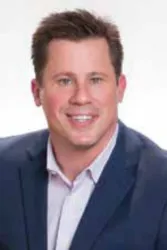Case Details
Composite resins are, and for the foreseeable future, the most widely used direct restorative material for restorations involving anterior teeth. Today’s composite materials offer practitioners tremendous physical properties, but also optical properties to deliver lifelike restorations on a consistent basis. Proper finishing and polishing, together with the right occlusal scheme, can provide the opportunity for these restorations to last a long period of time.
Though the handling characteristics of modern composites are vastly improved, dentists still struggle with the development of good interproximal contacts and proper anatomical contours. Utilizing an anterior matrix system can be paramount in achieving this objective. Matrix systems in the anterior region are numerous in respect to creativity, but the majority can be classified into flexible and rigid. Flexible matrices include the popular mylar strip and soft splint templates that can be challenging as they lack the ability to contour large areas, leading to irregular contours and contacts. Rigid matrices include putty indexes and pre-contoured posterior sectional matrix, both viable options in certain situations, but the majority of the time, posterior matrices are cumbersome and difficult to use when restoring multiple surfaces.
To overcome a majority of these aforementioned limitations, Garrison Dental Solutions has introduced the Fusion™ Anterior Matrix System, a simple matrix designed to be used for anterior restorations such as class III, IV, as well as composite veneers. The firm stainless steel matrix easily slides into the sulcus while maintaining the proper shape and contour without deformation. Properly placed, the ideal anatomical curvature is achieved in a gingival-incisal and facial-lingual direction. To help maintain this ideal anatomical position, the Fusion™ Anterior Wedge is used to ensure a firm seal at the cervical margin from facial to lingual. These radically curved wedges help free up your hands to allow one to concentrate on composite placement and simplify the restorative process.
This article is a case report of a direct composite restoration on a maxillary anterior tooth where the proximal contact and incised edge position were developed using the Fusion™ Anterior Matrix System.
A 74-year-old male presented with an old class III composite on the distal portion of his left lateral incisor (Figure 1)
Recurrent decay was noted both visually as well as radiographically. Treatment options were discussed with patient and it was decided we would replace the restoration with a new direct composite restoration. Small amounts of composite were placed on to the tooth and light cured to get an idea of what shade or shades would be utilized.
The patient was anesthetized with 1/2 carpule of 4% Articaine (Septodont) with 1:100,000 epinephrine. Isolation was obtained with a ComfortView® Lip & Cheek Retractor (Premier Dental). A pear shaped diamond bur (Meisinger) was used to remove the old restoration. A #2 round bur in a slow speed handpiece was used to remove all remaining decay, and finally an 856 diamond bur (Meisinger) was used to bevel the facial margin and create a butt margin on the lingual. A short anterior Fusion™ Band (Garrison Dental) was then placed interproximal past the finish line of the preparation and gently into the sulcus. A medium sized anterior Fusion™ Wedge (Garrison Dental) with its radical curvature was placed to ensure a firm seal at the cervical margin, all while not distorting the anatomical contour, unlike the mesial aspect of this same tooth where a wood wedge was used to seal the margin of that particular restoration (Figure 1).
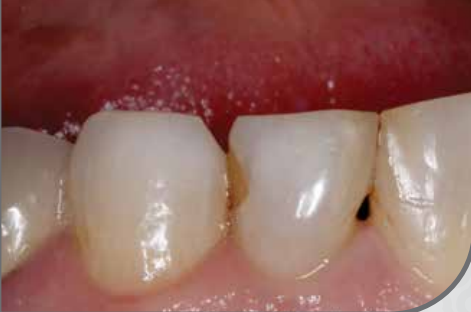
A smaller wedge may have been an option in this case as you can you see the orange wedge rotated slightly when placed, but due to the lack of distortion of the band and the great seal achieved I did not change. Access to both the facial and lingual of the preparation achieved a 35% phosphoric acid (K-Etchant Kuraray) was placed in a selective etch pro-tocol and allowed to sit for 30 seconds prior to rinsing off (Figure 2).
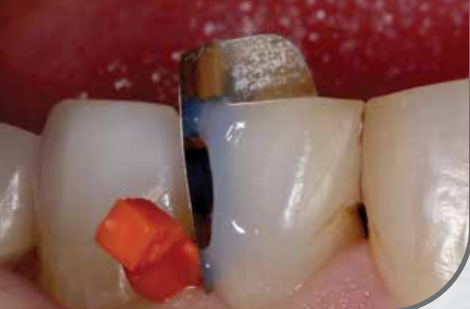
Universal Bond Quick (Kuraray) was then applied to the preparation in agitating motion for 10 seconds, air thinned and light cured for 20 seconds from both the facial and lingual to ensure polymerization. In the case of using a metal matrix that doesn’t promote light passage as friendly as a clear matrix, I felt more comfortable taking the extra time to polymerize. The flexibility of the Fusion™ Matrix system allows you to sculpt composite in an open fashion where you have access from the lingual as well as the facial while still benefiting from the anatomically correct interproximal contours. In this particular case, I took the approach of using my finger to push the matrix from the facial while adding a small increment of Majesty ES-2 Universal composite (Kuraray) from the lingual (Figure 3).
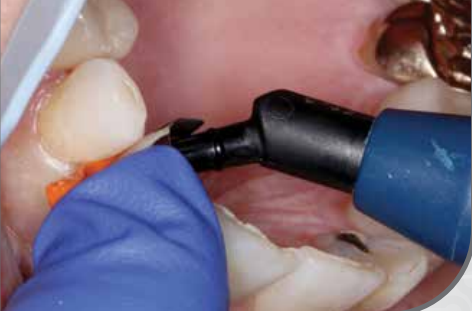
Composite instrument was then used from the lingual to manipulate the composite (Figure 4) and then light cured for 20 seconds.
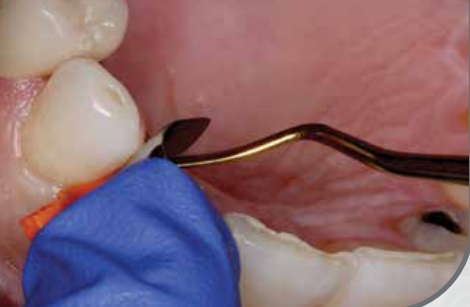
I repeated this process (Figure 5) until the restoration was filled to completion and light curing finished from the lingual.
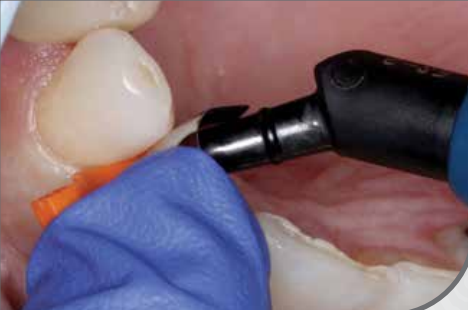
The matrix was then peeled away on the facial side and again cured for 20 more seconds to ensure complete polymerization. Anterior Fusion™ Wedge and Matrix were then removed to show minimal excess composite on the facial surface as well as ideal anatomical contours (Figure 6).
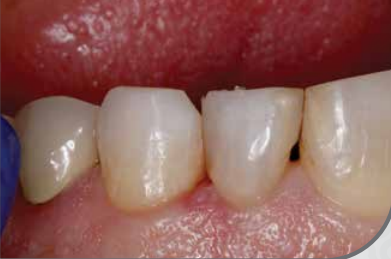
A fine flame diamond and a fine football shaped diamond (Meisinger) did most of the heavy refinement and adjustment of occlusion. The final polish was achieved using a two step diamond polishing system (Meisinger) (Figure 7).
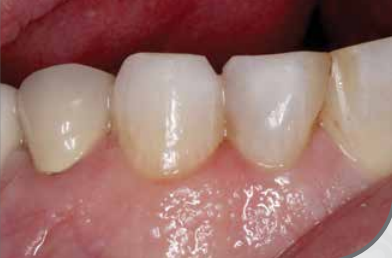
Understanding the limitations of the material in every situation and adapting newer techniques should be our focus to make our restorations more predictable and durable. The case presented featured a great new product that can help you establish good contacts and contours in the anterior region where paramount importance is not just from an aesthetic but also a functional point of view.
